
off the beaten safari track


Any reference to South Africa’s Cape region is almost guaranteed to bring to mind the famous mountains, glorious coastlines, and spectacular seaside scenery (also wine for the oenophiles). Yet inland from the sandy beaches and coastal forests lies a mosaic of fascinating habitats and protected spaces offering unique wildlife viewing. While South Africa’s safari circuit is dominated mainly by reserves in the northern and eastern parts of the country, the Cape safari experience is fundamentally different but equally enthralling.
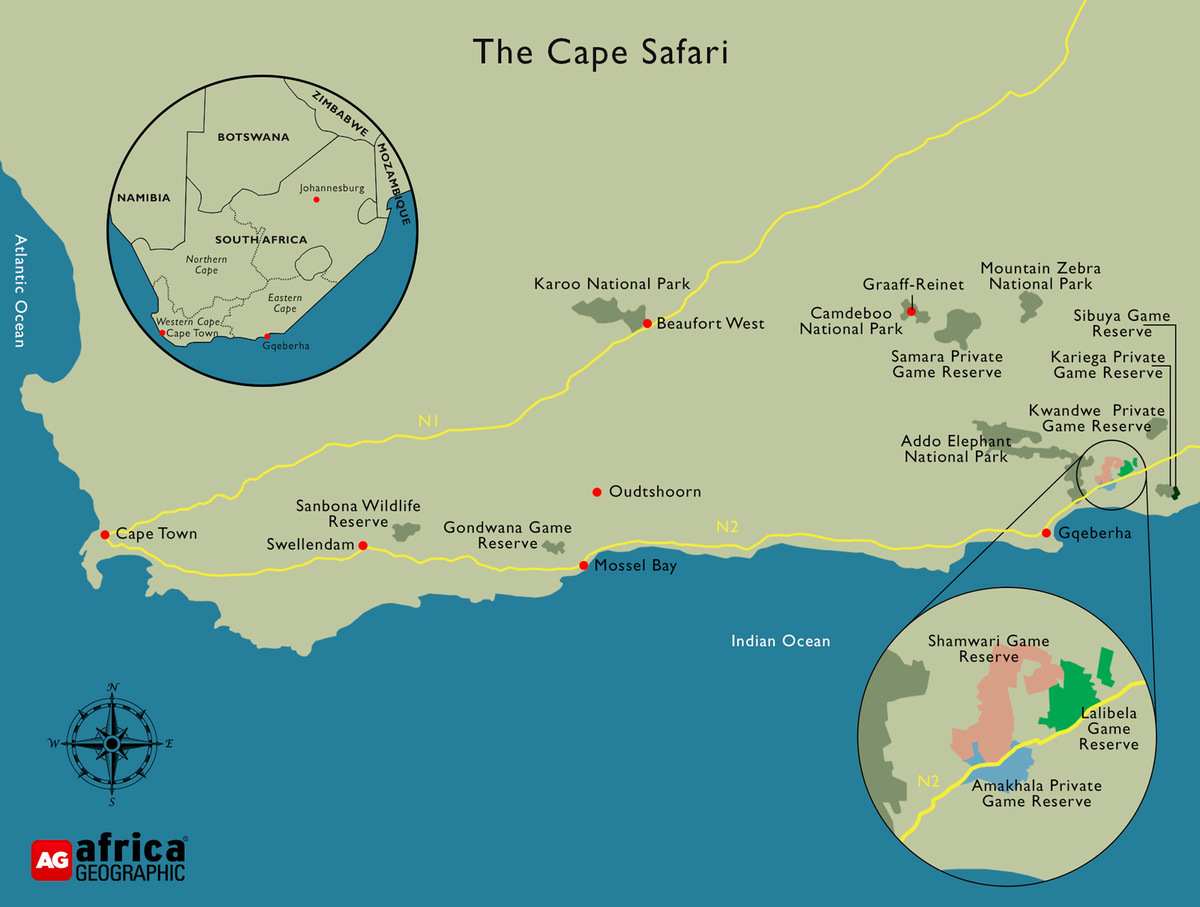
The Cape nature experience – the Western and Eastern Cape
In the previous stories of our Cape series, we focussed in greater detail on the wonders of Cape Town and the Garden Route, including the natural marvels in and around these areas. This third instalment zooms in on the various wilderness areas in the greater Cape region – specifically within the Western and Eastern Cape. These two adjacent provinces make up the south-western corner of South Africa. Together they encompass the entire Cape Floristic biome and most of the Karoo ecosystems right up to the transition with the grasslands of the Lesotho Highlands. Away from the lush greenery fed by temperate ocean climates and sheltered by a network of mountains, the landscape becomes progressively more arid and sparse, giving way to the almost Martian scenery of the Great Karoo.
 Find out about Cape Town for your next African safari. We have ready-made safaris to choose from, or ask us to build one just for you.
Find out about Cape Town for your next African safari. We have ready-made safaris to choose from, or ask us to build one just for you.
It is important to note at the outset that while this story focuses on the more “traditional” safari experience complete with iconic, large wildlife, the entire inland Cape region is a paradise for the enthusiastic naturalist. From ancient fossils to rock art and dramatic landscapes to intriguing critters in unusual settings, the variety of habitats and animals on offer are guaranteed to captivate and delight.
For the most part, the Cape safari experience is an exclusive one, based around vast swathes of privately-owned wilderness areas peppered with a combination of basic and high-end lodges. For those more accustomed to the conventional savanna setting, there is something vaguely incongruous about the sight of an elephant against the austere backdrop of mountains and sparse karoo vegetation or the Indian Ocean in the background. Yet, there was a time when the ‘Big 5’ (and many other species) roamed throughout the entire Cape region. Over centuries, they have been driven to the verge of extinction by human encroachment, unsustainable hunting practices and human-wildlife conflict. Fortunately, many of the private reserves of the Cape now boast an impressive conservation record and have served a pivotal role in restoring the magnificent creatures of the Cape to their rightful home. As a malaria-free destination, this is also one of the best safari options for families travelling with children.
Eastern Cape – the greater Addo ecosystem
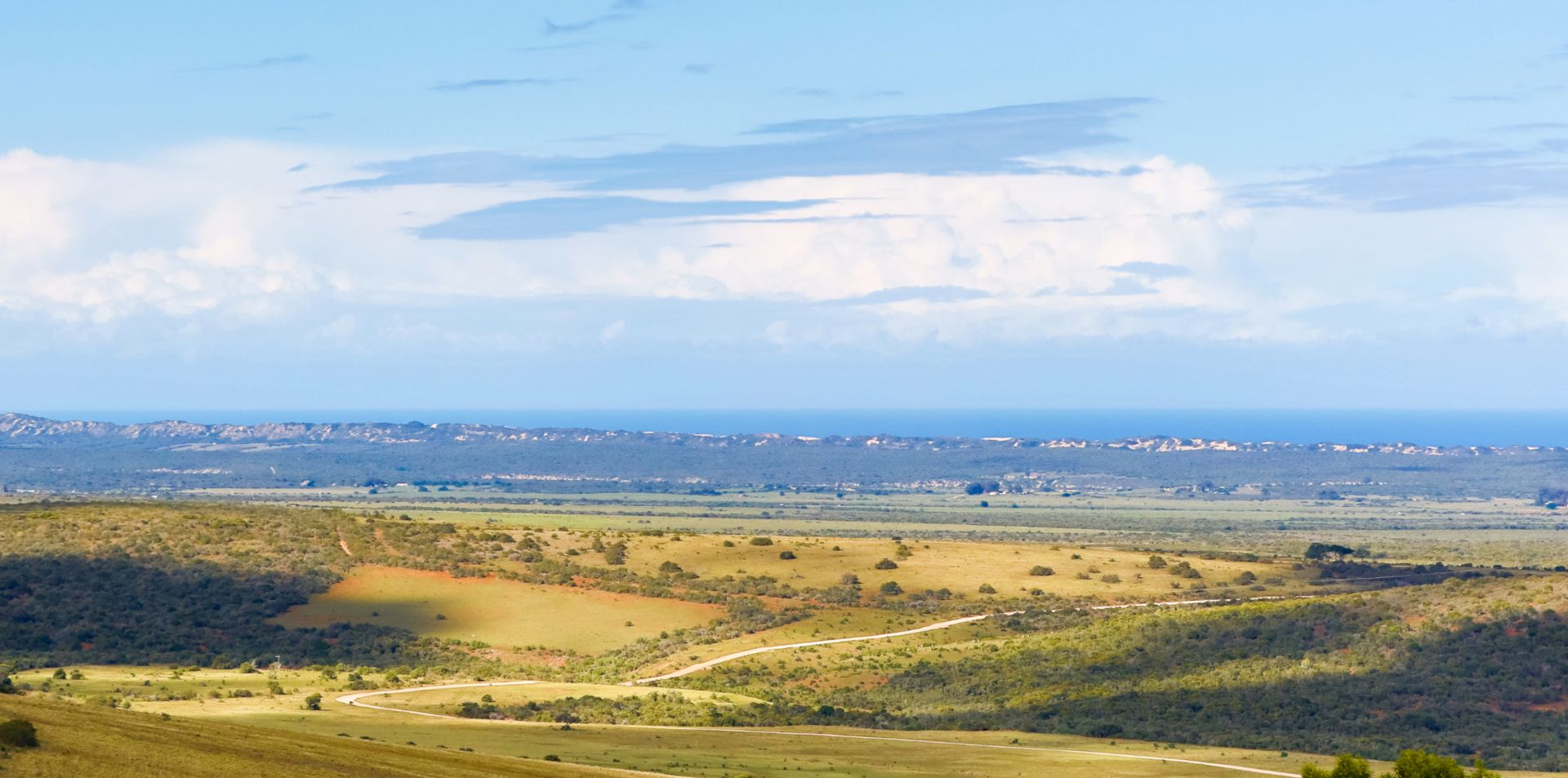

Addo Elephant National Park
As South Africa’s third-largest national park, Addo Elephant National Park covers 1,640km² (164,000 hectares) of Eastern Cape bushveld not far from Gqeberha (Port Elizabeth). Recent years have seen the park expanding to include the Woody Cape Nature Reserve, the Alexandria dune field and a marine portion extending to St. Croix Island and Bird Island. This expansion made Addo the only place in Africa where visitors can see the ‘Big 7’ – the ‘Big 5’ plus dolphins and whales.
As the name suggests, Addo is famous for its elephants. By the early 20th century, nearly every elephant in the Southern Cape had been slaughtered. Addo was established to safeguard the remaining few, then numbering fewer than thirty. Today, Addo is home to well over 600 elephants. Interestingly, nearly all females are tuskless, and bulls have been brought in from other areas to improve the population’s genetic diversity.
Elephants aside, Addo covers five of the country’s eight vegetation zones (Albany thicket, fynbos, Nama karoo, forest, and Indian Ocean Coastal Belt), and the biodiversity is staggering. Not only do the remaining ‘Big 5’ find sanctuary here, but a host of other creatures too. This list includes a flightless dung beetle that is of particular interest to those with an eye for the smaller, fascinating creatures of the region.
With its exceptional variety and fantastic elephant sightings, Addo is an essential stop for any Cape safari.
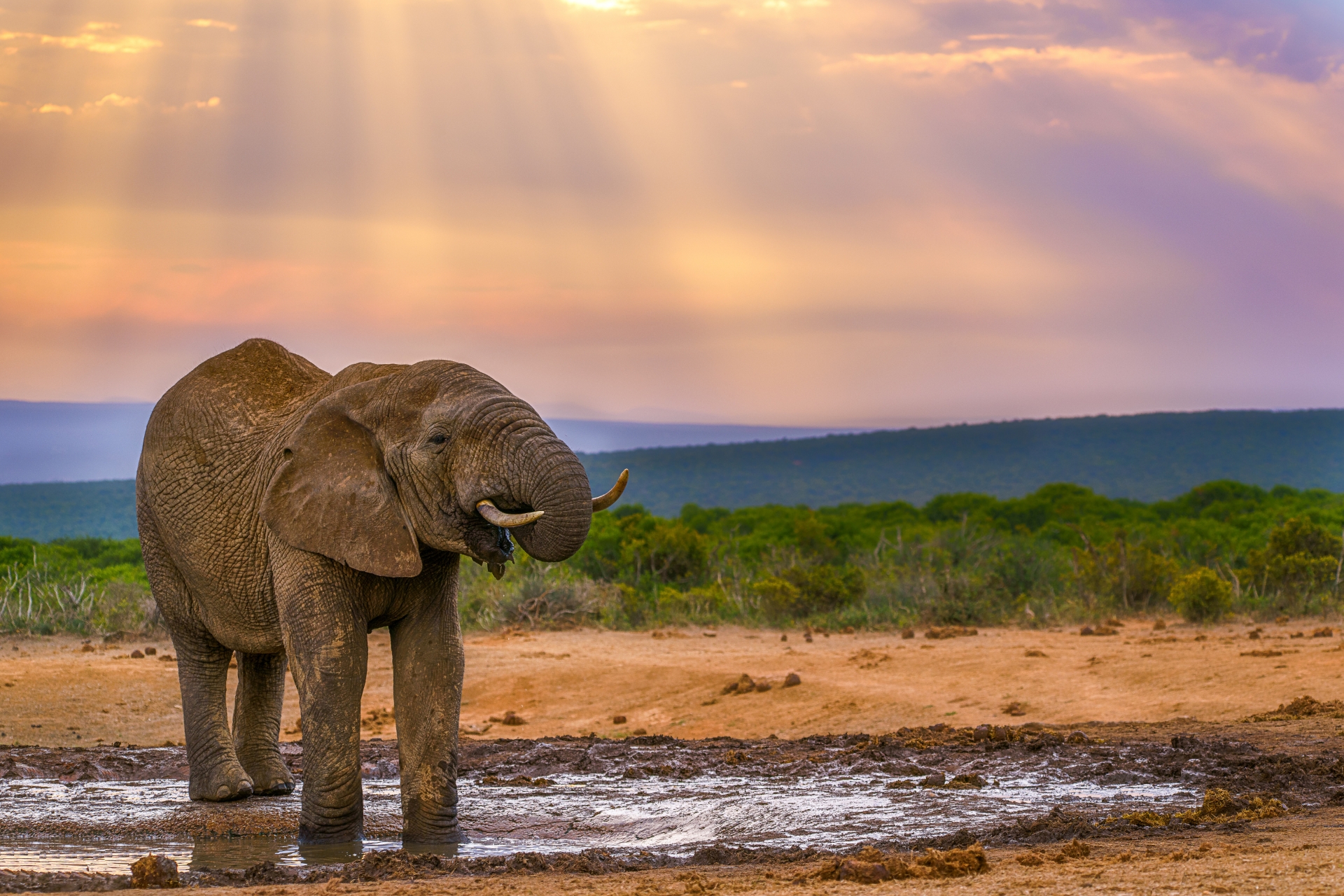
Amakhala Game Reserve
The 85km² (8,500 hectares) Amakhala Game Reserve features all of the scenic beauty and wildlife magnificence of Addo, with the added advantage that access is exclusively granted to guests of the various lodges. With awe-inspiring views, relaxed wildlife and a variety of accommodation options to suit most budgets, Amakhala epitomises the appeal of the Eastern Cape safari adventure.
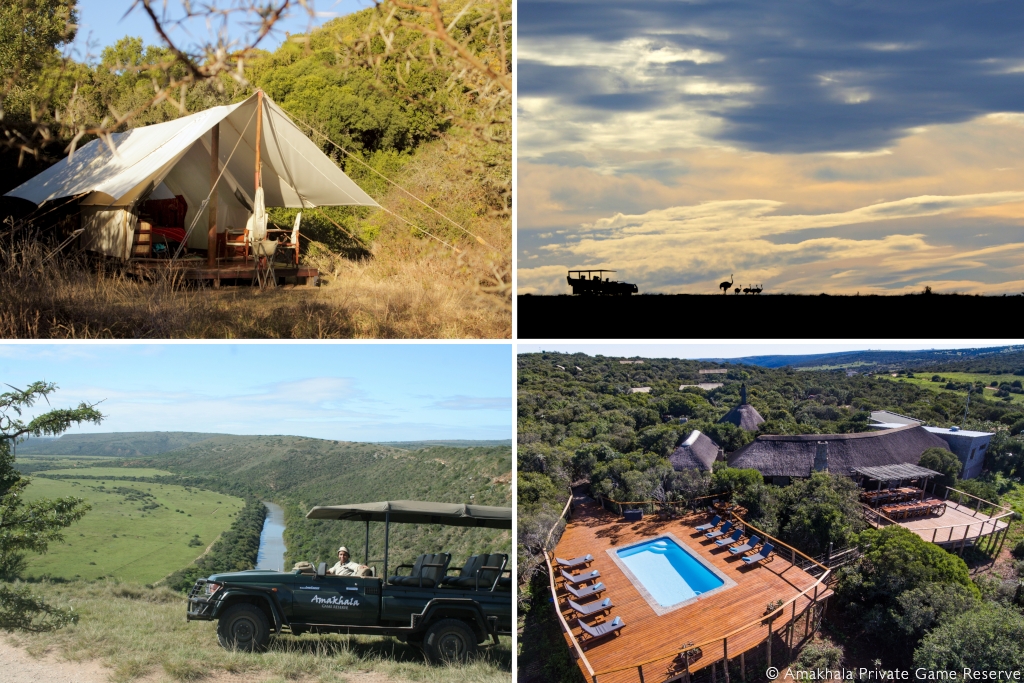
Kariega Private Game Reserve
Another major destination on the Eastern Cape safari circuit, Kariega Private Game Reserve is a family-owned and operated 100km² (10,000 hectares) reserve. It is ideally positioned between the Bushman’s and Kariega Rivers, not far from the Sunshine Coast, and boasts a diverse range of habitats and glorious vistas.
The lush rolling hills are home to the ‘Big 5’, antelopes and myriad bird species. Visitors can opt to complement the traditional game drives with boat cruises and walking trails. Of particular interest to many of Kariega’s guests is Thandi – a white rhino cow that survived a brutal poaching attempt in 2012. Despite horrific injuries, Thandi went on to make a full recovery and, to date, has given birth to four calves (and has one grand calf).

Lalibela Game Reserve
Recently rejuvenated, Lalibela Game Reserve offers an exclusive bush experience not far from Addo Elephant National Park. The reserve is 100km2 (10,000 hectares), and access is exclusive to guests of the lodges. Lalibela shares a similar setting with Addo, with the added advantage that there are substantial areas of open savanna grassland where herds of zebra, red hartebeest, wildebeest and blesbok congregate.
As is the case for many of the reserves in the area, Lalibela is a vital habitat for South Africa’s national bird, the striking and endangered blue crane.
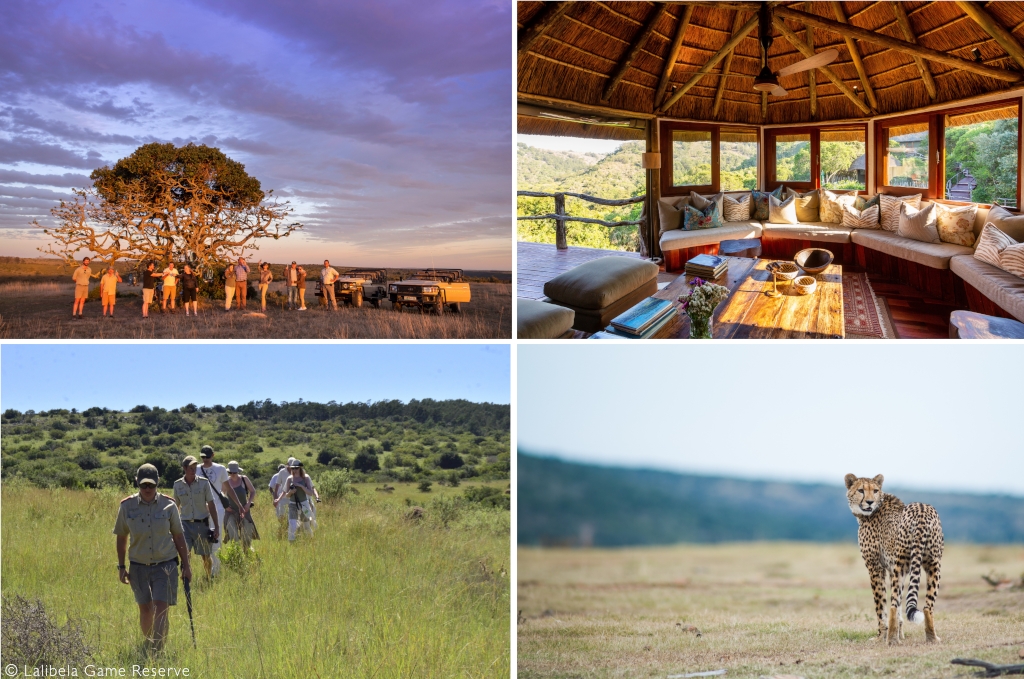
Kwandwe Private Game Reserve
A private reserve with a proud record of rehabilitation from farmland to restored wilderness, Kwandwe Private Game Reserve straddles the Great Fish River and covers a total area of 580km² (58,000 hectares). This region of the Eastern Cape is topographically dramatic, picturesque and boasts high levels of biodiversity.

Shamwari Private Game Reserve
Shamwari Private Game Reserve is probably one of the best-known private reserves in the Cape region and one of the most upmarket on this list. Offering the quintessential safari experience (and checklist), this 250km² (25,000 hectares) award-winning reserve has an impressive conservation record. Situated just 75km from Gqeberha, it shares many habitat similarities with Addo Elephant National Park. It is also home to the ‘Big 5’ and cheetah, with the added bonus of regular and reliable leopard sightings.
The reserve is also home to a wildlife rehabilitation centre, which is open for tourists to visit for an educational experience. No interaction with the animals is permitted, and the end goal is to release the animals back into the wild whenever possible.
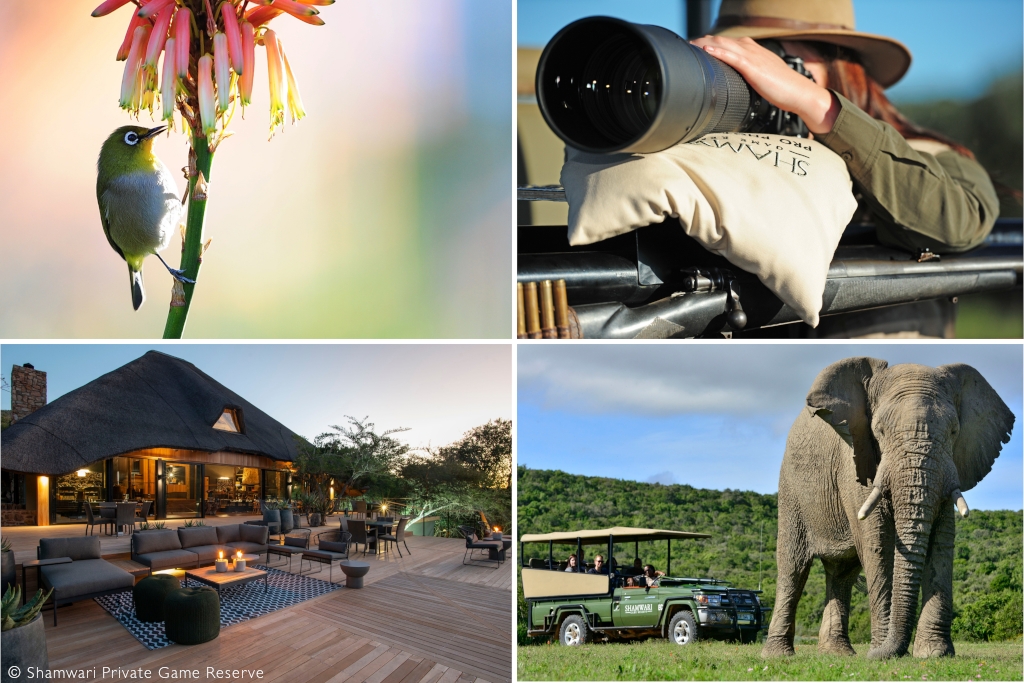

Eastern Cape – Karoo safaris
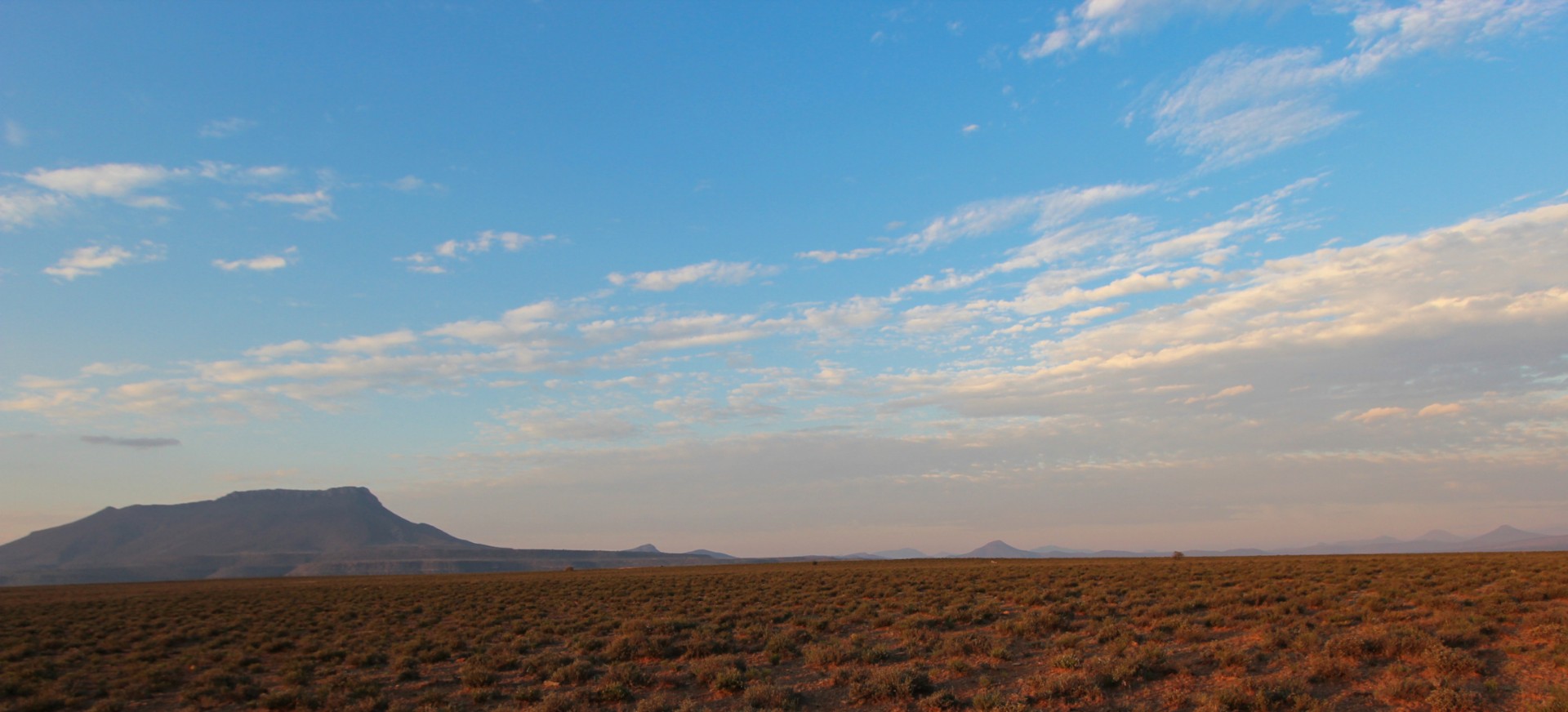
Camdeboo National Park
Wrapped around the quaint town of Graaff-Reinet is the 194km² (19,400 hectares) Camdeboo National Park in the heart of the Karoo. The gorgeous scenery, with ancient dolerite columns looking out over the Valley of Desolation, is the main attraction here. Don’t be fooled by the name because arid though the area may be, it still teems with life. Shy buffalo are the only representatives of the ‘Big 5’, and antelope and zebra abound, as do endlessly entertaining meerkats that call the park home.
However, the Camdeboo experience is mainly about escaping into nature and revelling in the scenery on display, as the shifting clouds and setting sun transforms the rocks through myriad shades of red.

Samara Karoo Reserve
After a couple of days spent enjoying the surroundings of Camdeboo, visitors with a hankering for a safari experience can travel to nearby Samara Karoo Reserve. Gradually assembled from a total of 11 farms, Samara is restoring a patch of wilderness and bringing wildlife back. The reserve now covers 283km² (28,300 hectares) in the Great Karoo, treating visitors to fantastic wildlife sightings and glorious views.
Even at its busiest, Samara only allows for a limited number of guests, making the experience extremely exclusive. Guests can expect sightings of white and black rhinos, elephants, lions, and herds of springbok, but tracking cheetah on foot is one of the reserve’s particular highlights.
For more on Samara’s restoration, see Samara-Rewilding the Great Karoo

Mountain Zebra National Park
Situated further inland near the town of Cradock, Mountain Zebra National Park was initially established to save the Cape mountain zebra – a subspecies of mountain zebra that was threatened with extinction during the early 20th century. It straddles the transition between Nama Karoo, Albany thicket and the grassland habitats of the central plateau. The park now extends over 284km² (28,400 hectares) and is a population stronghold for the still vulnerable Cape mountain zebras, which at last count numbered around 700. Small herds are regularly relocated to other reserves to restore this zebra to its former range.
In addition to the park’s namesake animal, further introductions have seen the arrival of black rhinos, cheetahs, brown hyenas and lions that now roam the craggy hills of the park. Away from the scrublands of the Karoo, Mountain Zebra is primarily grassland and open savanna, offering unimpeded views of the wildlife, including herds of springbok, black wildebeest, and gemsbok. In the long term, there are plans to link Mountain Zebra with Camdeboo, creating a massive conservation area.


Western Cape Safaris
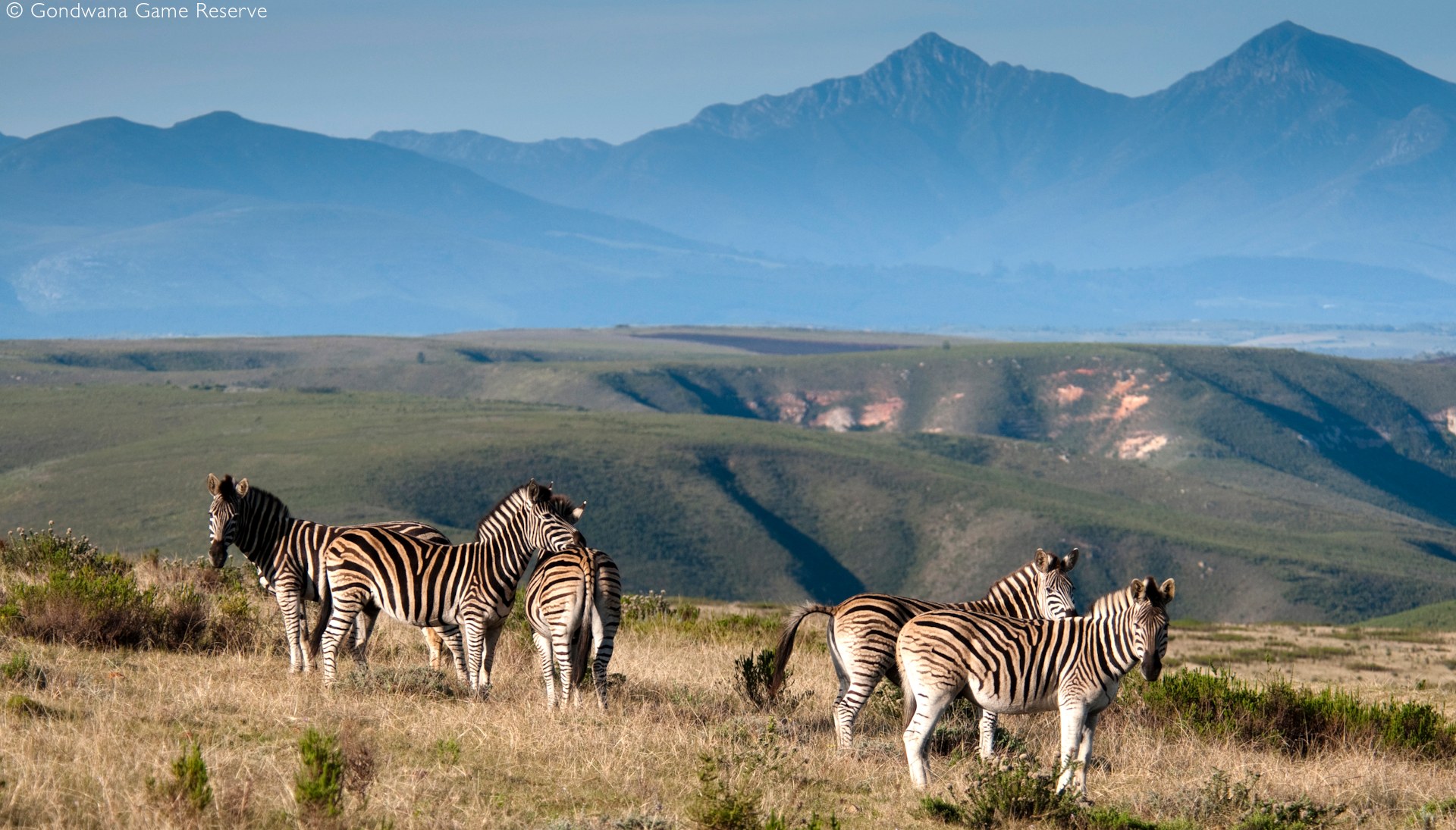
Gondwana Game Reserve
Situated along Garden Route not far from Mossel Bay, the 110km² (11,000 hectares) Gondwana Game Reserve was the first of its kind in the southern Cape region and is a fully free-roaming ‘Big 5’ region in the Western Cape. Once used for livestock farming, the land is being restored, and today wildlife abounds. Crucially, Gondwana boasts large areas of fynbos, many species of which are either endangered or critically endangered. In addition to the Big 5, cheetahs stalk through the fynbos and the reserve is also populated by herds of eland, bontebok, giraffe, and zebra.
Against the backdrop of the Langeberg and Outeniqua Mountains, visitors can explore on a game drive, mountain bike or hike on foot with a guide. The particularly adventurous can set off on a three-night trek through the reserve with overnight stays at fly camps along the route.

Karoo National Park
The state-run Karoo National Park covers 750km² (75,000 hectares) of arid and inhospitable-looking Great Karoo terrain. A portion of South Africa’s Great Escarpment (a prominent topographical massif that runs almost the entire width of the country) divides the park into lower and upper sections.
Originally known simply as a convenient stopover for people travelling to or from Cape Town, Karoo National Park has evolved to become the perfect escape for those looking to detox from city life without having to pay ultra-luxury prices. Harsh though the environment may seem, the park has gone from conservation strength to strength. It is now home to black rhinos and lions and an assortment of other rare and critically endangered creatures like the Cape mountain zebra and the riverine rabbit (one of the most endangered mammals in the world). Verreaux’s eagles nest on the dramatic cliff faces, and a small herd of Rau Quagga (a form of plains zebra back-bred to resemble the extinct quagga) was recently introduced to the reserve.

Sanbona Wildlife Reserve
In the heart of the Klein Karoo, at the base of the Warmwaterberg Mountains, lies the 580km² (58,000 hectares) Sanbona Wildlife Reserve – one of South Africa’s largest privately-owned reserves. Like the rest of the Karoo, ancient and more recent history is everywhere, including San rock art over 3,500 years old beneath rocky overhangs overlooking breath-taking views. Like many of the other reserves in the Cape area, Sanbona was once farmland, but intensive rehabilitation has restored the land to its former glory, as evidenced by the flourishing wildlife.
The’ Big 5′ are all present, as are cheetahs and brown hyenas, and sightings are made more impressive by the backdrop of magnificent scenery. From guided walks to boat safaris and stargazing to curated children’s programmes, Sanbona has something to offer everyone.

Conclusion
Want to go on a Cape safari? To find lodges, search for our ready-made packages or get in touch with our travel team to arrange your safari, scroll down to after this story.
The Cape safari experience offers adventures that are refreshingly different to the more renowned safari destinations elsewhere in Africa. The weather is generally good throughout the year (though the reserves can get very cold during winter), and the scenery is alluring and presents the perfect backdrop for diverse wildlife sightings. The wilderness areas are easily accessible and malaria-free, and the entire safari can be easily combined with a tour of the Garden Route, Winelands or Cape Town.
To comment on this story: Login (or sign up) to our app here - it's a troll-free safe place 🙂.![]()






